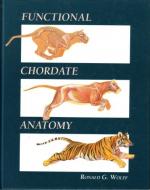|
This section contains 581 words (approx. 2 pages at 300 words per page) |

|
Human beings are chordates—of the phylum chordata—and so are all other vertebrates, or animals with a spinal column. In addition, there are two invertebrate groups of chordates: the urochordates and the cephalochordates.
The Urochordata (e.g., tunicates) and Cephalochordata (e.g., lancelets) were the earliest chordates to evolve, and they provide a link between invertebrate and vertebrate animals. However, as different as these organisms are from each other and from vertebrate chordates, they all share the following characteristics that identify them as chordates (and distinguish them from all other invertebrate animals): a notochord, a dorsal hollow nerve cord, and pharyngeal gill slits. Many adult vertebrates have no notochord or pharyngeal gill slits, but these structures can nevertheless be found in their embryos.
The notochord is a long, elastic rod that provides structural support to the chordate body. In cephalochordates it prevents the body from shortening when...
|
This section contains 581 words (approx. 2 pages at 300 words per page) |

|


